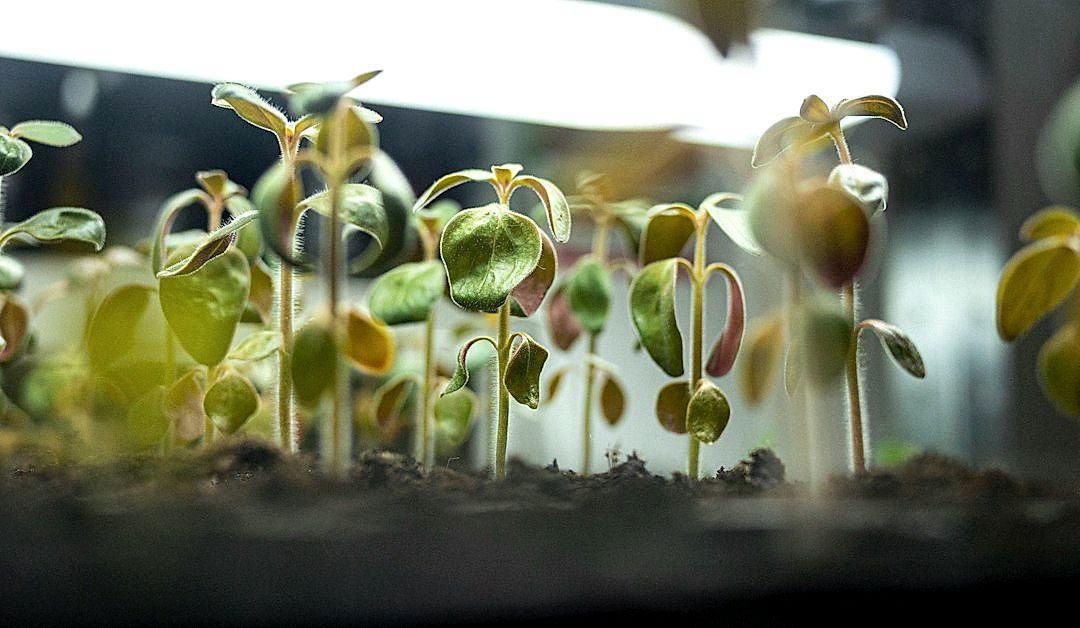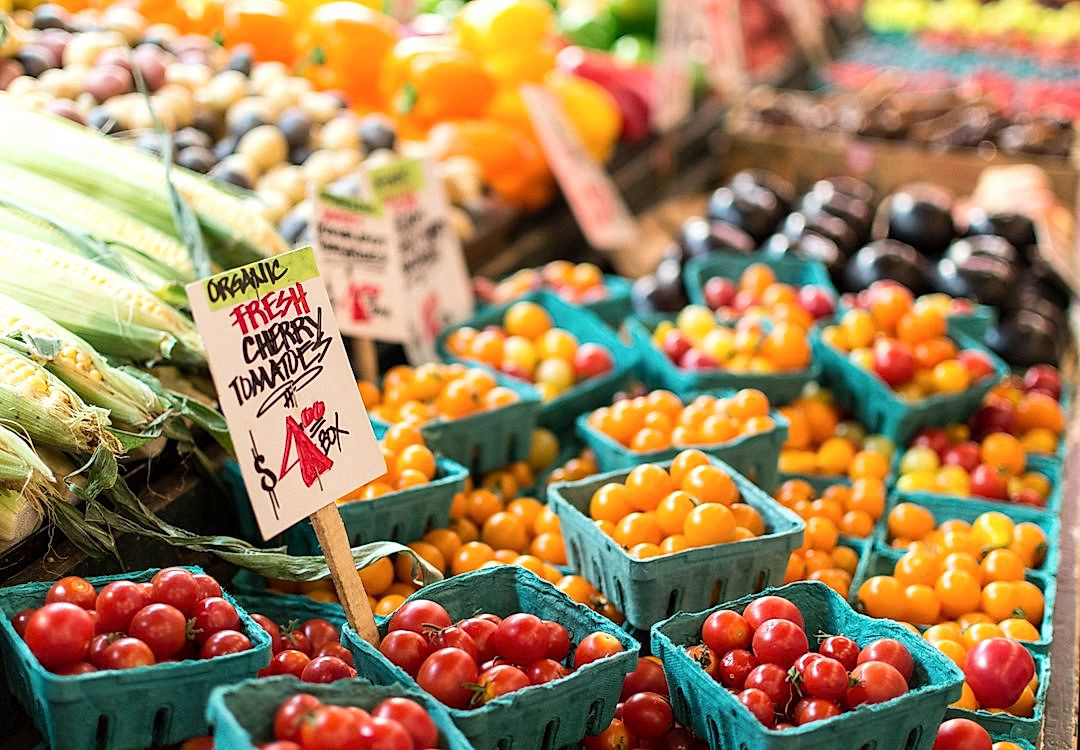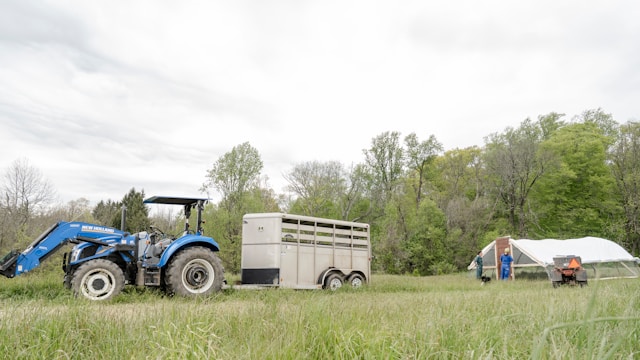As agricultural practices continue to evolve, some innovative programs are leading the forefront of this transformation.
They’re harnessing technology and science to reshape the field of produce farming.
This heralds a new era of sustainability, productivity, and profits for farmers globally.
These pioneering initiatives are setting the stage for a revolution in how we grow our food.
In this piece, we will delve into these developments, detailing their designs and impacts on the agriculture industry.
Understanding these programs could hold the key to preparing for the future of farming.
Programs Pioneering The Next Generation Of Produce Farming
1. AeroFarms’ High-Tech Indoor Vertical Farming Program
AeroFarms is a world leader when it comes to sustainable indoor vertical farming.
Their high-tech vertical farming program is revolutionizing the way we grow crops, making clean, top-quality produce accessible year-round, regardless of external climatic or environmental conditions.
This innovative Indoor Vertical Farming Program allows AeroFarms to cultivate plants entirely without soil, using a technique known as aeroponics.
Aeroponics uses a closed-loop system which recirculates water and nutrients while lowering waste and reducing the environmental impact.
The aeroponic system is capable of geo-targeting, meaning the plants can be grown virtually anywhere.
As a result, traditional agricultural barriers like access to land and fresh water, or seasonal and climatic variations are all but eliminated.
Another game-changing aspect of AeroFarms’ indoor farming approach is the preservation of biodiversity.
Because the plants are grown in a controlled indoor environment, the conditions can be finely tuned to discourage the growth of harmful pests and diseases, negating the need for harmful pesticides and promoting greener farming practices.
AeroFarms is also renowned for its data-driven approach to farming, utilizing artificial intelligence (AI), machine learning, and predictive analytics to optimize growing conditions and increase crop yields.
The company currently operates numerous farms worldwide, including what is touted as the largest indoor vertical farm in the world, based in Newark, New Jersey.
AeroFarms’ focus is not solely on commercial production, however.
They are deeply committed to community outreach and education, running various programs aimed at promoting urban farming and sustainable agriculture among youth and underserved communities.
Furthermore, the produce grown in AeroFarms’ farms is reported to be extremely nutrient-dense, with higher-than-average amounts of vitamins and minerals than traditionally grown counterparts.
This makes AeroFarms’ approach not just sustainable and innovative, but also a highly effective tool in the global fight against malnutrition and food insecurity.
Innovation, sustainability, and commitment to community are just a few of the reasons why AeroFarms’ high-tech indoor vertical farming program is leading the way in the next generation of produce farming.
2. Robotic Farming Program by Iron Ox
Initiated by a startup known as Iron Ox, the robotic farming program is pioneering the next generation of produce farming.
This wide-ranging initiative is built around the concept of autonomous robots that are capable of handling various farming tasks.
By deploying cutting-edge technology, Iron Ox is on a mission to reshape the traditional farming landscape.
Iron Ox focuses on making farming more productive, sustainable, and efficient through the use of robotics.
The company has developed two main types of robots for this program.
There is a 1,000-pound autonomous vehicle called Angus that can move around the greenhouse precisely maneuvering the individual plant modules.
There is also a robotic arm, known as Virgo, designed to execute the precise tasks of planting the seeds, transplanting the seedlings, and even harvesting the crops.
The company’s goal with these robotics is to reduce manual labor in the farming process and increase yield by a remarkable percentage.
The utilization of robots in this manner means that the farmland can be used more efficiently, and it allows year-round planting and harvesting.
Furthermore, the usage of robots by Iron Ox reduces the risk of produce contamination by harmful pathogens.
Since the robotic arms handle the plants in a controlled environment, they can ensure the plants’ hygiene.
Thanks to robotics, the Iron Ox program can maintain a controlled environment and optimal growing conditions for the plants throughout their growth cycle.
Importantly, Iron Ox’s approach to farming makes it possible to start farming projects in urban areas where space is a limitation.
This is possible because this kind of robotic farming can achieve higher yields per unit of land compared to traditional farming.
Ultimately, Iron Ox’s Robotic Farming Program is a testament to the tremendous potential of technology to bring advancement and unprecedented efficiency in farming practices.
3. High-Efficiency Greenhouses Initiative by BrightFarms
One high-tech solution to traditional farming that’s changing the landscape of agriculture is the High-Efficiency Greenhouses Initiative by BrightFarms.
The essence of this initiative is to combine innovative technology and sustainable practices in a greenhouse setting to maximize crop yield.
Through a network of regionally located high-tech greenhouses, BrightFarms is able to locally grow fresh produce all year round.
Each greenhouse is environmentally controlled, allowing for optimal growth conditions regardless of external weather conditions.
In maintaining this control, BrightFarms is able to extend the growing season and increase the yield of each crop.
High-efficiency greenhouses present a solution to many of the challenges faced by traditional farming methods, including land availability, water conservation, and seasonal limitations.
Regional localization of these greenhouses means that produce is fresher and less affected by large transport times and subsequently, food waste is significantly reduced.
This initiative also presents a solution to the rapidly changing climate of our planet, as less land is needed and water is recycled within each greenhouse.
The greenhouses use hydroponics, a soil-free farming method, using 80-90% less water than traditional farming.
Furthermore, the energy used is often renewable, as many of the facilities incorporate solar panels into their design.
By eliminating the need for synthetic pesticides, the High-Efficiency Greenhouses Initiative contributes to a healthier environment and healthier food consumption.
This technology is not just revolutionizing the way we farm, but is also creating new job opportunities in the tech and agriculture sectors.
The High-Efficiency Greenhouses Initiative by BrightFarms is fundamentally transforming the future of farming and setting a new standard for the industry.
As research and technology continue to evolve, so too does the potential of this initiative for creating a more sustainable future.
Its contribution to minimizing the negative environmental impacts of traditional farming and meeting the increasing demand for locally grown fresh produce is undeniably significant.
From a broader perspective, the innovative use of technology in farming is not just about improving efficiency but also about solving some of humanity’s biggest challenges: food security and climate change.
4. Indoor Farming Advancements by Plenty
In the realm of innovative farming, Plenty is a company that stands out, pioneering a new dawn in the agriculture industry with its advanced indoor farming technologies.
The Californian start-up has ingeniously brought together cutting-edge technology and agriculture under one roof to redefine urban farming.
Unlike traditional farming, Plenty’s indoor farming exploits artificial intelligence (AI) and machine learning techniques, alongside advanced irrigation and LED lighting systems.
A key selling point of this approach is the reduction of water usage – up to 95% less than traditional farming, a statistic that has significant implications for sustainable farming.
Plenty’s indoor farms are automated to the extent that they can create the perfect controlled environment for growth, eliminating the unpredictability that comes with weather patterns in traditional farming.
The company claims that they can produce crops all-year-round – irrespective of weather conditions.
In essence, indoor farming initiatives as executed by Plenty are shaping how we think about future food production and security in a turbulent climate.
Every crop in Plenty’s indoor farm receives a tailored light spectrum, irrigation, and climate, translating to 20 times the yield of traditional outdoor agriculture on the same footprint.
Furthermore, Plenty’s unique vertical farming design allows crops to be stacked, effectively maximising space usage and increasing production.
Crucial to this set-up is the company’s utilization of custom-built robotics to handle planting, harvesting, and packaging operations.
Their corporation with technology giants like Google and Amazon, allowed Plenty to create a proprietary technology stack that integrates machine learning, AI, and IoT applications.
This suite of technological innovation enables them to gather and analyze vast quantities of data about their crops.
On a consumer level, Plenty’s approach means that grocery stores or restaurants could potentially host their own micro-farms, creating hyper-local, fresh produce all year round.
In a nutshell, Plenty’s indoor farming advancements are setting a new standard for advanced agriculture, bringing together technology and farming in ways that were unimaginable just a generation ago.
By revolutionizing the face of farming, Plenty has positioned itself as a significant player in the arena of future sustainable food production.
5. Bowery Farming’s Automated Indoor Agriculture Program
With its vast concentration of technological advancements, Bowery Farming’s automated indoor agriculture program has positioned itself as one of the heralding figures in the progressive movement to revolutionize farming methodologies.
Relying on the compounded efficacy of robotics, AI systems and data science analytics, Bowery Farming has successfully implemented a system that is geared towards augmented productivity, nutrient optimization, and eco-friendliness.
The indoor farming system is largely automated, significantly minimizing the need for manual labor, subsequently reducing the operational costs involved in traditional farming.
From the germination of seeds to the packaging of mature produce for delivery, every stage is precisely managed and observed by the sophisticated system, assuring the highest quality of produce delivery.
Integrated AI technology allows the monitoring of crop growth with great precision, evaluating multiple variables such as moisture, temperature, and light intensity, making corresponding adjustments to constantly maintain optimal growth conditions.
The initiative further stands out for its environmentally-friendly approach to farming, eliminating the use of pesticides in its growing process and heavily reducing water consumption, as compared to traditional outdoor farms.
The water-saving feature is highly appealing, given that agriculture accounts for around 70% of the global fresh water consumption.
Relying on hydroponic systems, Bowery Farming is able to grow crops using 95% less water than traditional farming methods.
Moreover, the indoor nature of the farming space allows Bowery Farming to circumvent the limitations set by changing weather, pest infestations, or seasonal changes.
Bowery Farming’s signature blend of innovation and technology allows for the production of consistently high-quality and nutritionally dense produce round the year.
Future proofs the produce farming industry and ensuring food security in the face of a rapidly growing global population, the system is scalable and adaptable to different climates and geographies.
Constant innovations, such as the use of machine learning to improve crop yield and quality over time, position Bowery Farming as a leader in high-tech indoor farming.
The initiative stands as a successful example of how technology can be harnessed to address global food challenges, by maximizing yield, minimizing environmental impact, and revolutionizing farming methods for the better.
Indeed, Bowery Farming’s approach in merging technology and farming signals a shift towards more sustainable and efficient food production models.
As the world grapples with environmental degradation and food scarcity, Bowery Farming represents the vanguard of high-tech indoor farming solutions geared towards sustainability and efficiency.
With the continued incorporation of cutting-edge technologies into its operations, Bowery Farming’s high-tech program is set to play a significant role in the future of agriculture.
The Bottom Line
The future of sustainable agriculture is being redefined by ingenious tech-driven farm strategies.
AeroFarms, Iron Ox, BrightFarms, Plenty, and Bowery Farming are revolutionizing farming methods by integrating technology into crop production, showing noteworthy potential to upend conventional agriculture.
Their creative initiatives pave the way for elevated food security, diminished environmental impact, and increased productivity.
The introduction of high-tech vertical farming, robotic farming, and indoor automated agriculture, showcase a promising future where agriculture could be more efficient, sustainable, and resilient.
Throughout their innovative approaches, they are collectively setting a forte for other agricultural sectors to follow, re-imagining and redefining the centuries-old industry into a more sustainable and technologically advanced future.




